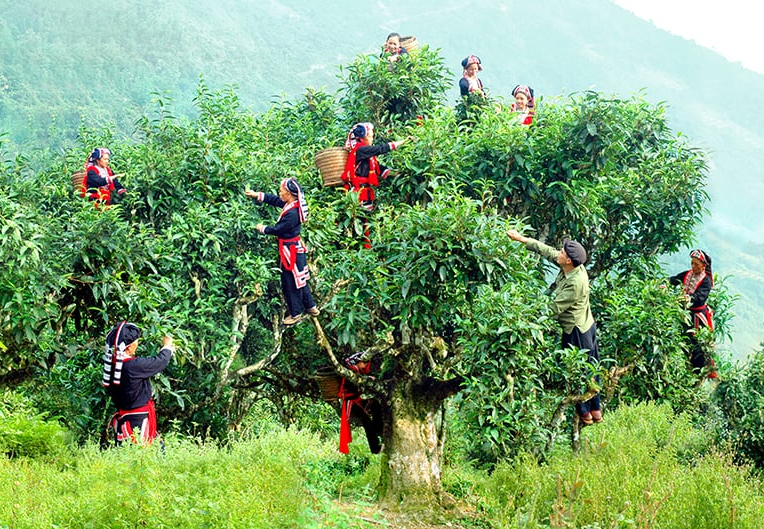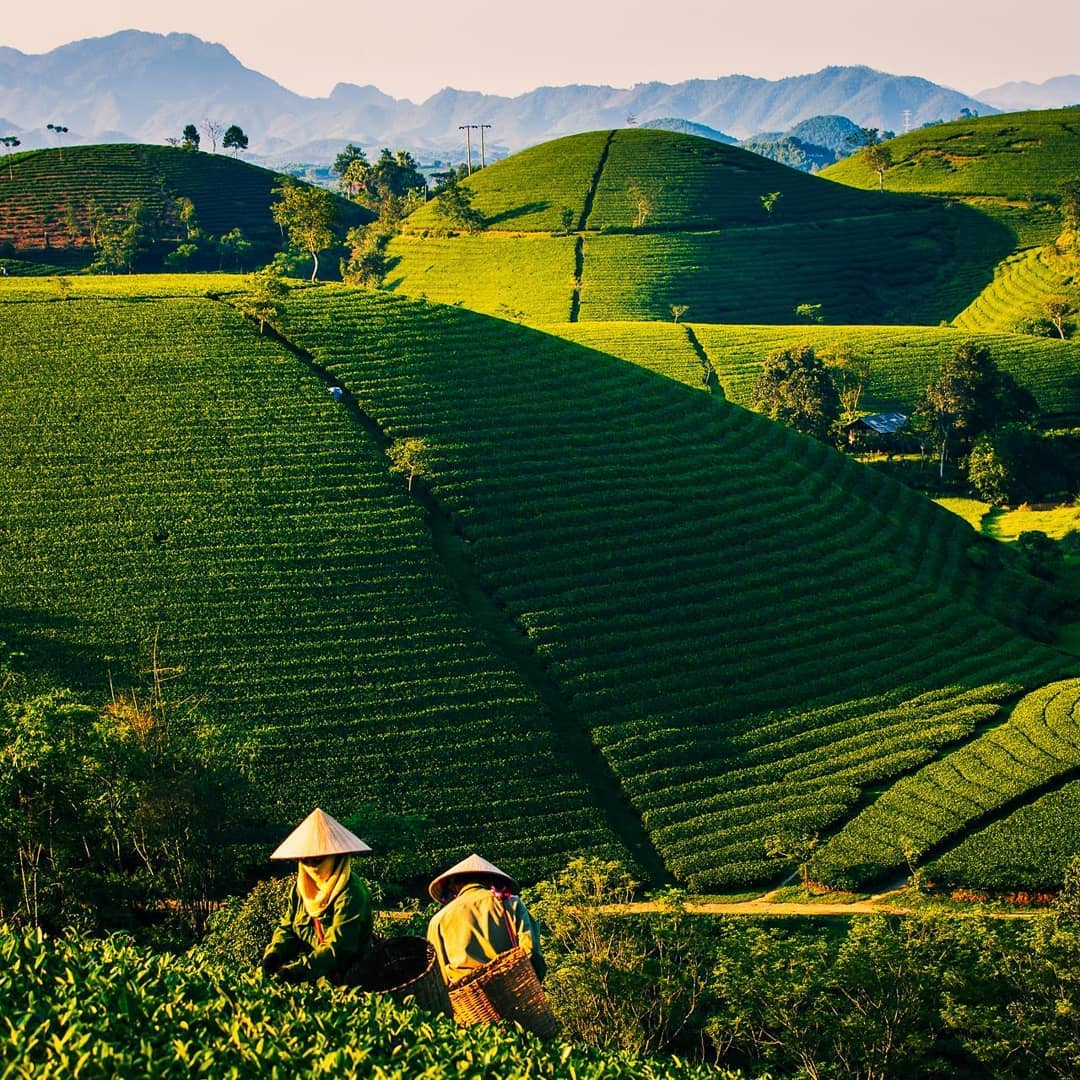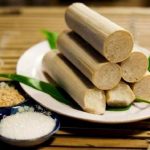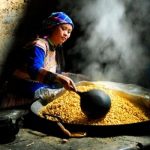Ha Giang Tea Plantations: Discover Shan Tuyet Tea in Vietnam 2025
By admin
Post Views: 94
Ha Giang Tea Plantations: Discover Shan Tuyet Tea in Vietnam 2025
Join me on a unique adventure through one of North Vietnam’s hidden gems—the breathtaking tea plantations along the Ha Giang Loop.
Have you ever dreamed of sipping the perfect cup of tea? Or perhaps, like my friend, you’ve longed to fulfill your “ancient tree tea dreams” by wandering the centuries-old tea trails of Ha Giang? Then pack your bags (and don’t forget your travel mug) and head straight for Vietnam’s northern wonderland.
In this post, I’ll guide you through lush tea gardens, ancient Shan Tuyet tea trees, and the rich cultural traditions that transform every sip into a truly magical experience.
The History of Ha Giang Tea
Tucked away in the northernmost corner of Vietnam, Ha Giang is a mountainous province stretching 270 km along the border with Yunnan, China. Here, tea is more than just a drink—it’s an essential part of daily life and culture.
Thanks to its year-round cool climate and fertile soil, the Ha Giang Loop has been a cradle of tea cultivation for centuries, fostering a tea culture as vibrant as the land itself.
At the heart of Ha Giang’s tea heritage lies the legendary Shan Tuyet tea, also called Snowy Mountain Tea. Its name reflects both the frosty white appearance of its delicate buds and the serene, snow-like atmosphere of the high-altitude plantations. Grown on mountain slopes at remarkable elevations, this rare tea develops a distinct flavor profile that makes it highly prized among tea lovers worldwide.
For generations, ethnic communities such as the Dao and Tay have carefully nurtured these ancient tea trees, passing down their wisdom through oral tradition and hands-on practice. Every sip of Shan Tuyet tea carries not only its unique mountain flavor but also the stories and heritage of the people who have tended it for centuries.

When you buy Shan Tuyet tea, you’re not only purchasing a unique product you’re also supporting local farmers and helping preserve one of Vietnam’s oldest tea traditions.
The Importance of Tea in Ha Giang
Tea culture in Ha Giang is deeply rooted in daily life, shaping the community in countless ways. Below is a closer look at the importance of tea in the region:
A Welcoming Tradition
In many villages of Ha Giang, offering a cup of tea to visitors is a traditional gesture of hospitality. This ancient custom symbolizes respect and warmth, showcasing the region’s rich tea heritage.
Tea Rituals, Festivals, and Ceremonies
Tea ceremonies are an integral part of Ha Giang’s festivals and rituals, such as the Fire Dance ceremony of the Red Dao people or the cap sac initiation ritual of the Dao community, which mark significant milestones in life. In these ethnic celebrations, tea plays a vital role, representing both cultural identity and community unity.
Sustainable Livelihood
For many families in Ha Giang, tea cultivation is more than just a tradition it is a vital means of livelihood. The process of tending to ancient tea trees and hand-processing their leaves not only provides income but also instills pride in their heritage, sustaining local communities across Ha Giang.

The Withering Process
After harvesting, the tea leaves are spread out to wither. This crucial stage reduces their moisture content, intensifying the flavors and aromas that make Shan Tuyet tea so distinctive.
Think of it as a natural “resting phase,” where the leaves develop their unique character in the fresh mountain air of Ha Giang.
Rolling: Releasing the Essence of Tea
Once the leaves have withered, they are gently rolled. This step releases the natural juices and essential oils that define the tea’s flavor.
It’s a delicate process that requires just the right amount of pressure to unlock the tea’s goodness without damaging the leaves.
The Oxidation Process
Depending on the type of tea desired, the leaves may undergo a brief period of oxidation.
For Shan Tuyet tea, oxidation is kept to a minimum to preserve its delicate flavor and maintain the signature “snowy” appearance of the buds and leaves.
Drying: Sealing in Freshness
Drying is the final step, where the leaves are carefully dehydrated to preserve their flavors. This can be done in the sun, in traditional ovens, or even over a slow fire.
The drying process is critical: over-drying may cause the loss of delicate aromas, while under-drying can shorten the tea’s shelf life and affect its quality.
Sorting, Packaging, and Final Preparation
After drying, the tea leaves are graded and sorted. Only the finest leaves are selected for export, while others are enjoyed locally in Ha Giang.
The final stage is packaging, often decorated with traditional designs that reflect the rich cultural heritage of Ha Giang’s tea plantations.
And then comes the moment of truth: brewing the tea. Just a few minutes of steeping in local spring water, and you’re ready to enjoy one of the finest cups of Shan Tuyet tea you’ll ever taste. (Unless you’re British—then you’ll probably want to perfect your breakfast tea first!)
Must-Visit Tea Plantations near the Ha Giang Loop
Here are some of the most remarkable plantations to visit in Ha Giang, where you can savor the region’s best Shan Tuyet tea:
Phin Ho Tea Plantation
Located in the heart of Hoang Su Phi district, Phin Ho is a remote mountain village home to about 44 households of the Dao ethnic minority.
With nearly 50 hectares of ancient Shan Tuyet tea trees, the villagers have transformed their rich tea heritage into a thriving community enterprise. Visitors can enjoy eco-tourism activities and even take part in hands-on tea picking sessions.
As you wander through the plantation, you’ll pass by terraced rice fields—just one example of the breathtaking northern Vietnamese landscapes admired around the world.
Cao Bo Tea Village
For an authentic glimpse into rural life and the craft of tea-making, Cao Bo Tea Village in Vi Xuyen district is an essential stop. This charming village is home to some of the oldest tea trees in Ha Giang.
Here, you’ll gain exclusive insight into the tea-making process and experience the daily rhythms of village life, from wooden stilt houses to traditional ceremonies.
As you explore, you may even be invited to join local festivities or learn a traditional dance—a living, breathing celebration of culture you won’t want to miss.
Lung Phin Tea Plantation
High in the mountains of Meo Vac district, over 1,000 meters above sea level, lies Lung Phin Tea Plantation—a place where mist lingers in the air and every leaf tells a story.
This is no ordinary tea farm. Here, centuries-old tea trees grow silently, their roots deep in both soil and tradition. The cool mountain climate enhances the delicate fragrance of leaves cultivated with care and patience for generations.
At Lung Phin, traditional cultivation methods remain largely unchanged—a reflection of the resilience and dedication of local farmers who have mastered the art of tea in such demanding conditions.
Guided walks lead visitors through forested trails and hidden valleys, culminating in a tea tasting that captures the rich flavors, culture, and quiet magic of the mountains.
Tay Con Linh Mountain’s Ancient Tea
The pinnacle of Ha Giang’s tea experience lies on Tay Con Linh Mountain—the province’s highest peak and a revered destination for tea lovers.
Along the winding trails and dense forests, you’ll encounter expansive groves of ancient Shan Tuyet tea trees. The journey rewards you not only with breathtaking views but also with the chance to sip tea infused with the very essence of the mountain—shaped by altitude, climate, and centuries of tradition.
Practical Tips for Your Ha Giang Loop Tea Adventure
When to Visit
Tea Harvest Season: The best time to witness tea harvesting is in spring (April–June) and autumn (September–November), when the buds are at their peak.
Mountain Weather: Ha Giang’s highland climate stays cool year-round. Mornings are often misty and chilly with light drizzles, so bring a lightweight jacket or raincoat—especially if heading out early.
Getting There
Starting Point: From Hanoi, you can take a bus or hire a private car to Ha Giang. Once you arrive, check into Lazy Cat Homestay, the perfect base for your adventure. The team will help you get ready to explore.
Private Ha Giang Loop Tour: With Lazy Cat Homestay’s local expertise, you’ll discover hidden tea trails and winding mountain roads that most visitors miss. You might even pick up a few local phrases—perfect for sharing stories over a cup of Shan Tuyet tea!
Cultural Etiquette
Respect the Locals: Ha Giang is home to diverse ethnic communities, each with unique traditions. Always ask before taking photos, dress modestly, and greet people warmly.
Engage and Enjoy: Strike up conversations. Even with language barriers, locals are eager to share their tea heritage. You might even be invited to join a festival or ceremony.
Take Some Tea Home
Tea to Go: Before leaving, buy some Shan Tuyet tea to savor Ha Giang’s flavors long after your trip. Many plantations offer beautifully packaged tea—perfect as gifts.
Support Local Farmers: By purchasing tea, you’re not only taking home a piece of Ha Giang, but also supporting the livelihoods of farmers who preserve this centuries-old tradition.
Visiting Ha Giang Tea Plantations: Supporting Local Communities
One of the most rewarding aspects of exploring the Ha Giang Loop Tea Plantations is witnessing the strong sense of community that thrives around tea cultivation.
In Ha Giang, centuries-old Shan Tuyet tea trees are more than crops—they are the backbone of the local economy. Tea farming has been a family tradition for generations, and in recent years, modern approaches have helped transform it into a cornerstone of community-based tourism.
Boosting Local Livelihoods Through Tea Farming
Over the past decade, local authorities and cooperatives have introduced innovative training programs and modernized processing techniques. These initiatives have greatly improved both the quality of the tea and the income of tea farmers.
As a result, each hectare of tea now produces higher yields, directly improving living conditions for local families. Once modest, farmers’ incomes have grown significantly, turning traditional plantations into modern success stories.
Our Reflections on Ha Giang’s Tea Plantations
The tea plantations along the Ha Giang Loop are the heart of the province, providing a vital livelihood for countless local communities. Visiting these plantations is not just a suggestion—it’s a must.
Let your senses guide you as you discover the freshest, most aromatic cup of Shan Tuyet tea in the breathtaking highlands of Ha Giang.

But in the end, it’s not just about the tea. It’s about the journey itself—the warmth of the friendly local people and the unforgettable experiences you’ll have while exploring the picturesque tea fields along the way.
Ha Giang Loop Tour (Small Group) with Lazy Cat Homestay
Explore the breathtaking landscapes of Northern Vietnam on the famous Ha Giang Loop with Lazy Cat Homestay, the perfect base for your adventure. Join a small group (6–8 people) for a safe and authentic motorbike journey guided by experienced local riders.
✅ Ride across the legendary Ma Pi Leng Pass
✅ Visit traditional ethnic minority villages
✅ Choose between easy-rider or self-ride motorbike options
✅ Stay at our cozy Lazy Cat Homestay in Ha Giang City
Whether you’re traveling solo, as a couple, or with friends, this is the ultimate Ha Giang Loop experience for those seeking authentic local culture, stunning views, and unforgettable memories.


